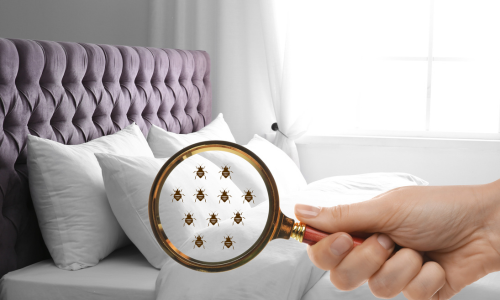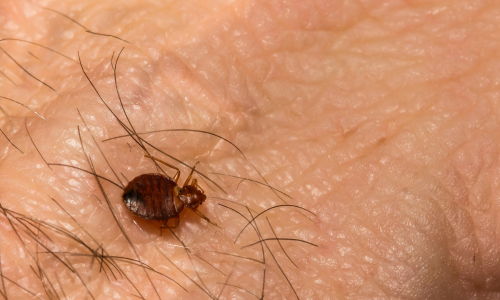Greetings friends. If you find yourself contending with minuscule, yet formidable adversaries - bed bugs - this read is your beacon of hope. Delve into an unexplored aspect with me, examining an often-overlooked indicator of these pests: the telltale traces they leave behind. Indeed, we’re discussing bed bug poop. A peculiar subject to some, yet an essential dialogue to comprehend the complex battleground against bed bug infestations.
Embarking on this enlightening journey, one might wonder why bed bug poop merits a dedicated discussion. The answer lies in early detection and proactive mitigation. Bed bug droppings can be the first sign of an unnoticed nocturnal invasion, silently revealing their concealed presence and thus, are pivotal in early intervention, sparing one from the torment of escalating infestations.
The unseen markers: Identifying bed bug poop and droppings
Bed bugs, clandestine and elusive, leave behind distinct markers, one of the most conspicuous yet oft-overlooked being their excrement, commonly referred to as bed bug poop.

Discerning these silent indicators is pivotal in unmasking their clandestine havens and necessitates a detailed understanding of what one should keenly observe.
- Visibility and appearance of bed bug droppings:
- Visibly discernible, but can be mistaken for dirt or speckles.
- Can be seen with the naked eye; meticulous inspection necessary.
- Typically about 1 mm in size.
- Appear as minute, dark brown or black specks, occasionally granular.
- Can resemble pepper flecks.
- Location and odor:
- Often found near feeding and harboring zones of bed bugs.
- Might present a musty, somewhat sweet odor in infested areas.
- Odor partly attributed to droppings, partly to bed bug alarm pheromones.
- Implications of droppings quantity:
- Multiple, especially fresh droppings (dark and possibly wet), could imply active infestation.
- Bed bugs may defecate several times during/after a blood meal; droppings can accumulate rapidly.
- Clusters of dark specks in secluded areas (e.g., mattress seams, behind picture frames, within folds of drapery) may indicate ongoing infestation.

- Quantification and impact of bed bug droppings:
- Quantifying bed bug population from droppings is formidable.
- A single bed bug can produce between 5 to 20 fecal spots after one blood meal.
- They might feed as frequently as every day if a host is available.
- Even a modest infestation (10-15 bed bugs) can result in hundreds of fecal spots quickly.
- Multiple droppings in various locations, especially in disparate rooms, signal a potentially widespread infestation, necessitating immediate, intensive intervention.
In the ensuing battle against these nocturnal invaders, understanding the subtle nuances of their droppings – their appearance, quantity, and distribution – becomes an indomitable weapon, enabling you to discern their unseen harbors and patterns, and thereby, strategizing an effective counteroffensive.
Your knowledge, paired with potent allies like Six Feet Under, transforms you from a beleaguered victim to a formidable adversary, ensuring these invaders are promptly, thoroughly eradicated, securing your domain from their insidious invasions.
Dead bed bugs: A gruesome tale of battles won and lost

Perhaps you've discovered a crime scene of tiny, lifeless bodies - dead bed bugs, an indicator of an existing or past skirmish within your dwelling. Celebratory as it might seem, discovering dead bed bugs should also be a note of caution, signaling the potential of lingering adversaries concealed within crevices, awaiting their next nocturnal feast - your blood.
While dead bed bugs attest to the efficacy of a previous extermination endeavor, they also whisper tales of reinfestation, especially when accompanied by fresh bed bug droppings. In some instances, these critters are incredibly resilient, and their eggs can lie dormant, awaiting conducive conditions to hatch and reconvene their assault.
Six Feet Under: Your ally in the bed bug battle
Six Feet Under, ingeniously crafted by yours truly, Dr. Killigan, is your vanguard in ensuring the bed bug tales end with their demise and not a continuation of your torment. Six Feet Under doesn’t merely repel bed bugs; it annihilates them, assuring you of a sanctuary free from future invasions.
Yet, amidst its powerful pest-eradicating capabilities, Six Feet Under gracefully embodies a paramount concern for safety and environmental responsibility.

Meticulously formulated, it champions a non-toxic, eco-friendly composition, rendering it not only lethal to the bed bugs but also unassailably safe for your loved ones – be they children, pets or the adult inhabitants of your abode. In the light of this, the product serves as a testament to the fact that efficacy and safety can, indeed, harmoniously coexist. Dr. Killigan has ardently ensured that while your nights regain their peaceful tranquility, free from the merciless bites of the dreaded bed bugs, the days are equally serene with no underlying frets about exposing your household to harsh chemicals.
It is imperative to acknowledge that eradicating bed bugs isn’t solely about immediate extermination but safeguarding against recurrent invasions. Six Feet Under, with its potent yet safe formulation, eradicates not just the wandering pests, but ensures that their eggs and larvae meet a similar fate, thus breaking the cycle of reinfestation and providing a comprehensive solution against these relentless nocturnal adversaries.
In essence, Six Feet Under is not only your ally in bed bug warfare but also a guardian, vigilantly preserving the safety and wellbeing of your household, ensuring that the battle is won with no collateral damage to your sanctuary’s inhabitants.
Strategic applications: Ensuring Six Feet Under achieves optimal impact
Harness the power of Six Feet Under by targeting zones identified by consistent bed bug droppings. Encompassing areas like mattress seams, behind headboards, within crevices of furniture, or any dark, secluded spots, are the strategic sites to launch your counteroffensive. Administering Six Feet Under in a meticulous, targeted manner ensures that not only the visible, but the hidden, secretive bed bugs are decimated, securing your fortress against their resurgence.
Consistent applications, especially in identified hotspots, are paramount to ensure any newly hatched eggs are instantaneously dealt with. Furthermore, safeguarding potential entry points and frequenting areas will fortify your dwelling, ensuring that every nook and cranny is an inhospitable environment for these pests, thus securing your domain from further invasions.
In conclusion: Your restful night awaits, free from bed bug terror
It has been an enlightening journey, exploring the avenues of bed bug detection and eradication with you.

Knowledge, after all, is your foremost weapon, and understanding bed bug poop, dead bed bugs, and their behavioral patterns equips you with the prowess to detect, eradicate and safeguard your haven against their insidious invasions.
Six Feet Under, devised with not merely extermination but preventative care in mind, ensures that your nights are undisturbed by these bothersome invaders. A conscious blend of potency against pests while safeguarding your environment ensures that victory against bed bugs is both effective and conscientious.
Until our next encounter, may your nights be tranquil and your dwelling pest-free. Dr. Killigan, signing off, assuring you that with the right knowledge and tools, your pest problems will be laid to rest, six feet under.










